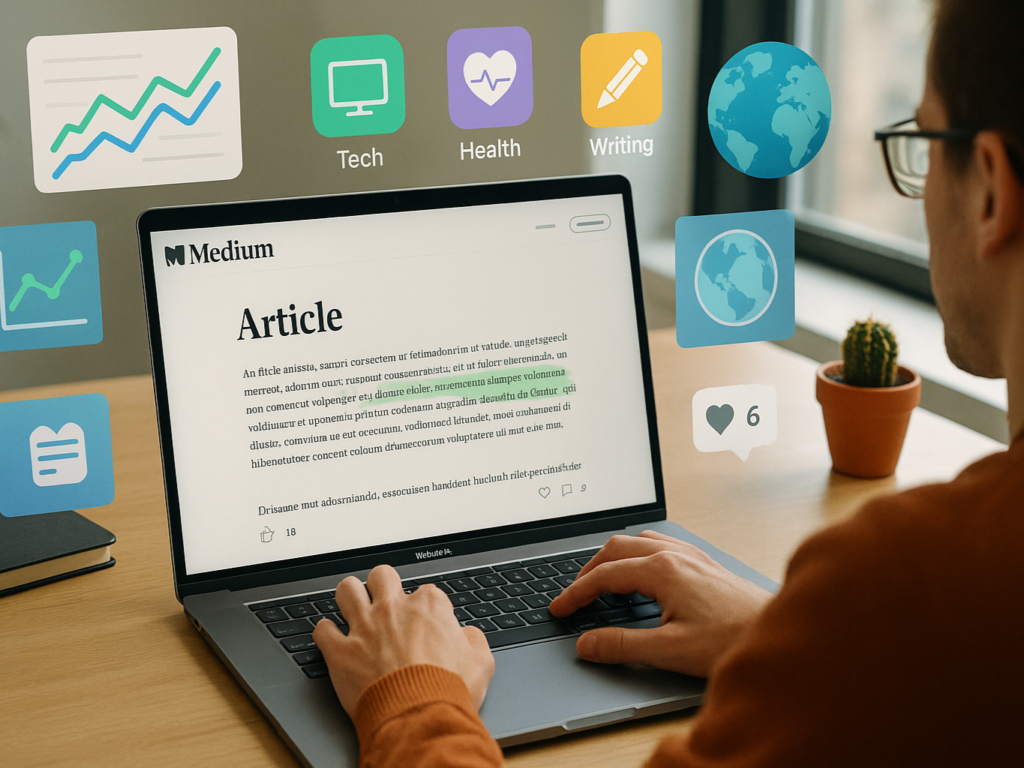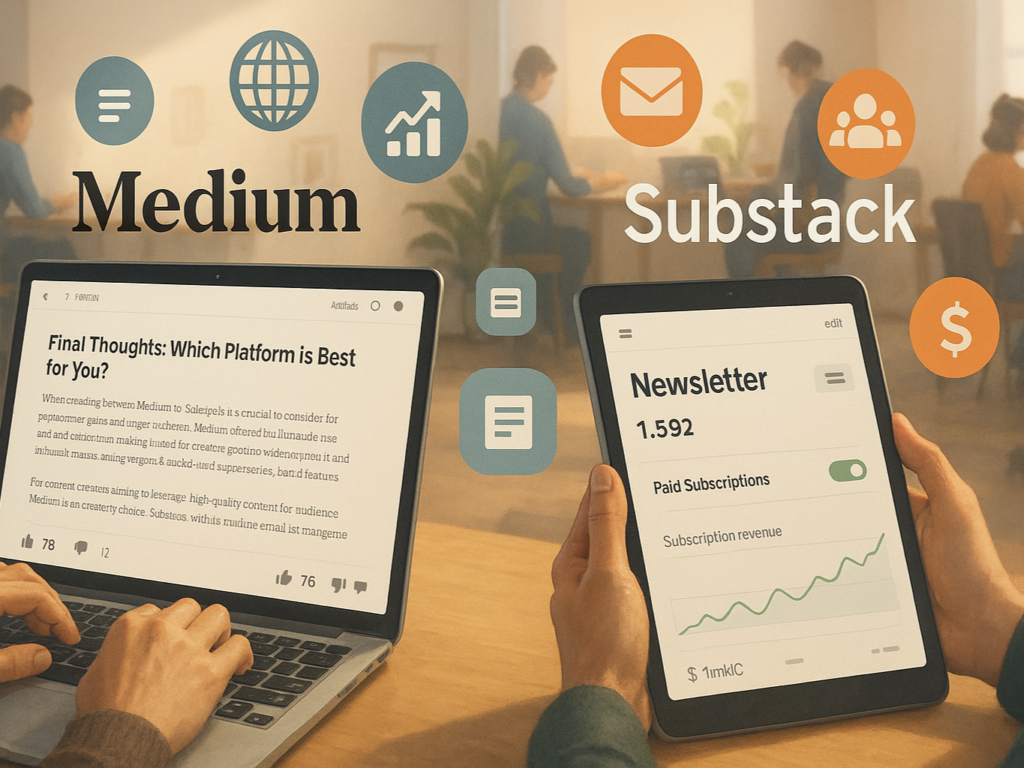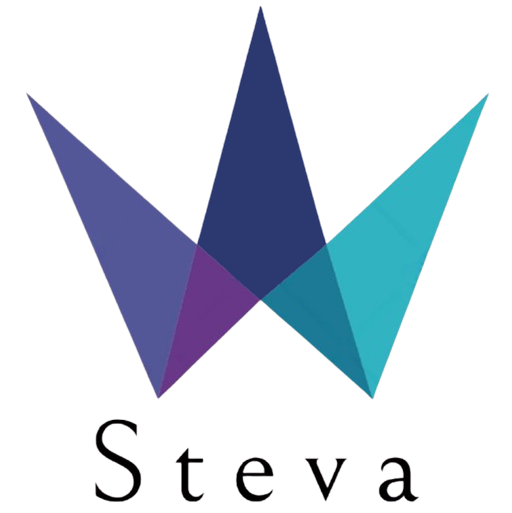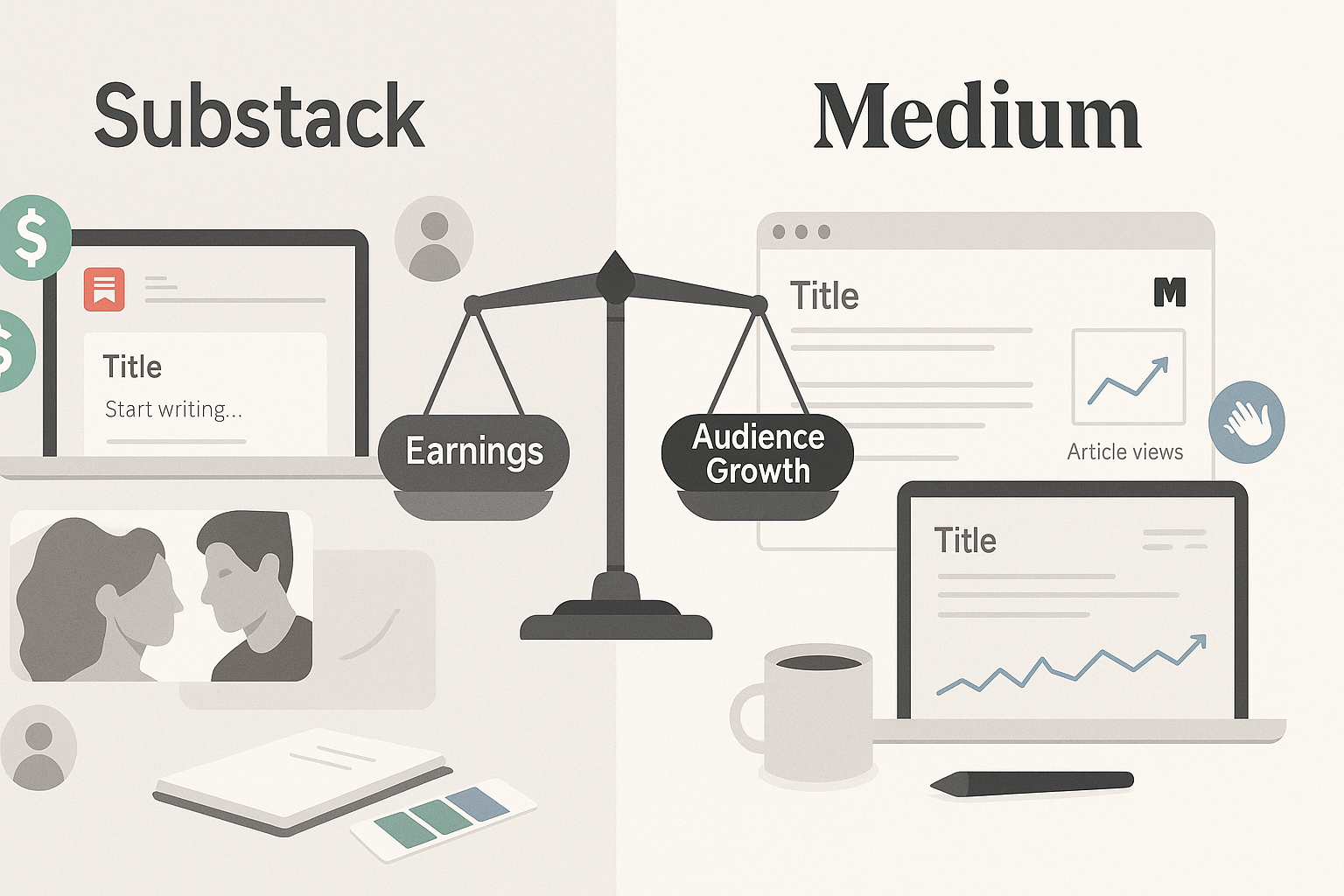In a time when words can inform, inspire, and influence, choosing where to publish them is key for content creators. Substack and Medium are two big names in digital publishing. Each platform has its chances and challenges for writers who want to share their voices. The digital age lets us explore creativity. But with this freedom, we must make informed choices.
Knowing the differences between these platforms can help both new and experienced writers reach their full potential. Substack attracts users with its subscription model for income. Medium, on the other hand, offers creators exposure to a large audience that craves diverse stories. Using these platforms requires both strategy and intuition. Each one has its own style and audience expectations.
This guide explores the Substack vs Medium Pros and Cons. It covers platform benefits, monetization strategies, audience growth, and content management. By the end, you’ll be better equipped to make an informed choice about which platform aligns with your creative goals and professional aspirations.
Understanding Substack: The Subscription-Based Platform

Substack stands out as a dynamic platform for independent writers, providing a unique combination of core features aimed at audience growth and revenue generation. Its primary allure lies in its innovative subscription model, which empowers writers to monetize their work through paid subscriptions. This model allows writers to charge subscription fees, creating a direct revenue stream from their subscriber base.
A key feature of Substack is its emphasis on email newsletters, which serve as the backbone for building an engaged audience. By connecting directly with email subscribers, writers can cultivate a faithful readership and ensure that their high-quality content reaches a wider audience without the interference of algorithms.
Core Features of Substack
| Feature | Description |
|---|---|
| Email Newsletters | Direct delivery of content to subscribers’ inboxes. |
| Paid Subscriptions | Enables monetization through subscription fees. |
| Subscriber Analytics | Insights into audience growth and content performance. |
The subscription model Substack offers allows for a more intimate connection between writers and readers, as it minimizes distractions from ads and fosters a loyal following through consistent, exclusive content.
Exploring Medium: The Writer’s Platform for a Broad Audience
Medium is a dynamic platform dedicated to articles, blogging, and publications, attracting both new and seasoned writers. It serves as a space for writers to share high-quality content and connect with a broader audience through its vast reader base.
Medium operates on a freemium model, allowing readers access to some content for free, while more exclusive content is behind a paywall. Writers can earn via the Partner Program, which compensates based on reading time and engagement.
1. Key Features of Medium
- Built-in Audience: Medium already has millions of monthly readers on the platform. This built-in audience helps writers gain exposure effortlessly without needing to invest time or money in building a following from the ground up.
- Audience Analytics: Medium provides detailed stats like views, read ratio, and engagement over time. These analytics help writers understand what topics resonate most, allowing for smarter content creation and better decision-making in future publishing efforts.
- Simple Interface: Medium’s minimalist writing editor is distraction-free and easy to use. Writers can focus purely on storytelling or thought leadership without the burden of formatting or learning complex tools, making it perfect for beginners and pros alike.
- Social Features: Readers can comment, highlight text, follow writers, and “clap” for stories they enjoy. These interactive tools help build a loyal audience and foster meaningful connections between creators and readers, something rare in traditional blogging platforms.
2. What Writers Gain
- Exposure to a Variety of Interests: Medium covers everything from tech and entrepreneurship to mental health, poetry, and personal essays. This diversity allows writers to explore multiple niches, test different voices, and connect with unique reader communities globally.
- Monetization Opportunities: With the Medium Partner Program, writers get paid based on member reading time, even without a huge email list or fan base. This enables early-stage creators to earn income by focusing on quality content rather than marketing.
Medium is ideal for individual writers looking for a platform that prioritizes content quality and audience growth over subscriber counts. Whether you’re blogging for fun or publication excellence, Medium offers a balance of simplicity and potential profitability.
Substack vs Medium: Core Differences at a Glance

When comparing Substack vs Medium, key differences emerge in monetization, audience reach, and content control. Substack focuses on email newsletters, allowing independent writers to monetize through direct subscriptions. Writers here have complete control over email lists and can build a unique subscriber base. Custom domains and direct email addresses enhance content control.
Medium, on the other hand, offers a built-in audience with its vast reader base, which can appeal to those seeking immediate access to a wider audience. It provides a subscription model that shares revenue, allowing contributors to earn based on article performance. Medium also prioritizes high-quality content, ensuring articles reach broader audiences via algorithms.
| Feature | Substack | Medium |
| Monetization | Direct subscriptions, subscription fees | Shared subscription revenue |
| Audience Reach | Email subscribers, individual control | Built-in, larger audience |
| Content Control | Full control, custom domains, email lists | Platform-controlled distribution |
Both platforms offer space for writers seeking different advantages. Substack’s choice for writers aligns with those pursuing exclusive content and deeper audience connection, whereas Medium caters to writers craving swift exposure and audience growth. Ultimately, the choice hinges on personal preference and long-term goals.
Monetization Methods: Which Platform Pays Better?
For independent writers, choosing between Substack and Medium isn’t just about picking a platform; it’s about understanding how each supports your growth, monetization potential, and audience relationship. Your goals, style, and strategy will determine which one fits best.
1. Substack’s Subscription-Based Model
- Revenue Structure: Substack lets writers charge readers directly via monthly or yearly subscriptions. Writers keep around 90% of the revenue after payment processing and platform fees, making it highly rewarding for those who build loyal audiences.
- Pros: Creators have full control over their content, email lists, and even branding with custom domains. This is ideal for writers focused on building a newsletter-based business with recurring income and direct relationships with readers.
- Cons: Success relies on your ability to convince people to pay. If you’re new or don’t have a strong online presence, converting free readers into paid subscribers can be a slow, uphill battle.
2. Medium’s Partner Program
- Revenue Structure: Medium pays based on how long Medium members read your stories. The longer and more engaged the reading time, the more you earn, making it performance-based rather than subscriber-driven.
- Pros: Perfect for writers who want instant exposure to millions of active readers without needing to build an email list. You can start earning quickly if your content resonates with Medium’s audience.
- Cons: Earnings are controlled by Medium’s algorithms and member reading time. You don’t own your audience, and income can fluctuate based on content trends and platform changes.
Comparison Table:
| Feature | Substack | Medium |
| Revenue Model | Subscription fees | Engagement and views |
| Audience Growth Potential | Email subscribers | Built-in audience |
| Income Control | High, with direct subscriptions | Moderate, platform-based |
Ultimately, the choice comes down to the writer’s preference for control versus reach. Both platforms offer unique monetization paths for fellow writers.
Building and Growing Your Audience: Which Platform Helps More?

When it comes to building and growing an audience, writers today often face a choice between two leading platforms: Substack vs Medium. Each offers unique features to aid independent writers in reaching wider audiences.
Substack empowers creators to build direct, loyal audiences through customizable email newsletters. It allows writers to establish strong connections with their subscribers via email lists and direct subscriptions, fostering a sense of community and exclusivity. This direct engagement helps in nurturing a loyal subscriber base.
Conversely, Medium provides a built-in audience and superb SEO capabilities that facilitate organic reach. Its vast reader base and social features can significantly enhance audience growth without requiring substantial effort from individual writers. Medium’s platform simplifies the process of reaching a broader audience.
Here’s a quick comparison:
| Feature | Substack | Medium |
| Audience Type | Direct & loyal via email subscriptions | Built-in & organic reach |
| Subscriber Engagement | Strong personal engagement | Leverages a vast reader base |
| SEO Capabilities | Limited | High |
Choosing between Substack vs Medium depends on whether you prefer building deeper relationships with a focused subscriber base through emails or gaining organic reach within Medium’s larger audience.
Content Control and Flexibility: What Can You Do with Your Work?
In the realm of digital writing platforms, Substack vs Medium emerge as notable contenders, each offering unique advantages and challenges concerning content control and flexibility.
Substack stands out primarily due to its emphasis on granting independent writers full control over content and branding. Writers enjoy the liberty to tailor their email newsletters, manage their email lists, and utilize custom domains, ensuring a brand-specific experience. The freedom to set subscription models and fees allows writers to cultivate a dedicated subscriber base without external constraints.
In contrast, Medium provides a structured environment that appeals to those seeking a built-in audience. While Medium offers a vast reader base and broader audience reach, some writers might feel limited by stricter content guidelines. The potential limitation in content freedom could impact individual creativity and personalization.
Here’s a quick comparison:
| Feature | Substack | Medium |
| Content Control | Full control | Limited by platform |
| Audience Reach | Email lists, subscriber base | Built-in audience |
| Branding Options | Custom domains | Standard profile |
Ultimately, the choice between Substack vs Medium depends on whether writers prioritize creative independence or a ready-made readership.
User Experience: Navigating Substack vs Medium for Creators
Navigating Substack and Medium can be a different experience depending on a creator’s specific needs. Both platforms offer unique interfaces, tools, and customization options that cater to various aspects of content creation.
1. Substack
- Ease of Use: Substack offers a clean, distraction-free interface that’s ideal for writers focused on content creation. Its email-first approach lets users effortlessly build mailing lists, manage subscribers, and maintain direct relationships with readers without needing technical know-how.
- Customization: While Substack doesn’t offer deep visual customization, it allows creators to connect their custom domains, adding a layer of professional branding. This small but powerful feature can significantly impact how potential subscribers perceive a publication.
- Direct Subscriptions: Substack’s standout feature is its ability to monetize via paid subscriptions. Writers can lock premium content behind a paywall, set their pricing, and retain full control of their audience, a powerful setup for long-term revenue building.
2. Medium
- Ease of Use: Medium combines an elegant editor with intuitive formatting tools that cater to writers of all levels. Its frictionless publishing experience, along with a massive built-in audience, makes it easier to get content in front of readers fast.
- Customization: Medium offers some layout and image flexibility, allowing writers to shape the visual flow of their stories. However, the platform doesn’t support custom domains, which can limit branding opportunities for those seeking a fully owned publishing identity.
- Social and Analytics: Medium’s strength lies in its ecosystem: readers can follow, highlight, and comment on articles. Combined with robust analytics, writers can track how their content performs and engage more meaningfully with a broad, data-backed audience.
3. Tools Comparison
| Feature | Substack | Medium |
| Email Integration | Strong focus on email lists | Lesser emphasis |
| Custom Domains | Available | Not available |
| Audience Analytics | Basic | Advanced |
| Social Interaction | Limited | Extensive |
For independent writers looking for a choice, Substack offers simplicity and mailing capabilities. At the same time, Medium provides enriched interaction and a built-in audience, catering to both formal and informal content scopes.
SEO and Discoverability: How Each Platform Helps You Get Found
When it comes to getting discovered, Medium vs Substack adopts different strategies, each with its pros and cons. Medium leverages its built-in audience and strong Google ranking to ensure high content discoverability. Its internal search feature allows individual writers to reach a broader audience through the strategic use of tags and categories. This facilitates access to the vast reader base without needing additional promotion from the writer.
Substack, on the other hand, prioritizes email lists for content promotion and organic growth. By enabling direct subscriptions, Substack allows writers to communicate directly with email subscribers, nurturing a more personal connection. This method is effective for audience growth through email newsletters, although it requires writers to build their subscriber base more independently.
Here’s a quick comparison:
| Feature | Medium | Substack |
| Discoverability Tools | Strong Google ranking, internal search | Direct through email lists |
| Audience Access | Built-in, broader audience | Individual email subscribers |
| Promotion Strategy | Organic through the platform’s search features | Organic through email communication |
Both platforms offer unique advantages: Medium, with its vast built-in audience, and Substack, with its focus on email-driven growth. The choice between them depends on whether you prioritize Google-driven discoverability or direct subscriber engagement.
Engagement and Community: Building Relationships with Readers
When it comes to community building, both Substack and Medium offer unique features that foster connection with readers; Substack shines in its ability to allow writers to interact directly with subscribers. Here, writers can communicate through email newsletters, enabling a personalized engagement experience. Substack’s email-based model empowers independent writers to build a loyal subscriber base, with a focus on exclusive content delivered straight to readers’ inboxes.
Medium, on the other hand, provides a broader array of tools for reader interaction. Its built-in audience is vast, thanks to social features like comments, claps, and responses. Medium’s publications also offer independent writers a way to reach a wider audience by joining thematic communities. This makes it a suitable choice for writers who appreciate open-ended reader engagement.
| Feature | Substack | Medium |
| Direct Interaction | Email newsletters | Comments and claps |
| Audience Type | Email subscribers | Built-in, social-driven audience |
| Community Building | Personalized engagement | Publications and reader tools |
Ultimately, Substack’s strength lies in nurturing direct relationships, while Medium offers a more interactive space for writers and readers alike.
Pros and Cons of Substack for Content Creators
Substack is a rising star for content creators, offering a unique mix of independence and direct audience engagement. Here’s a breakdown of its pros and cons:
1. Pros of Substack
- Independence: Substack gives writers complete creative and financial control. There’s no algorithm deciding who sees your content, and you’re free to publish whatever you like, making it a great fit for independent voices and niche creators.
- Email Control: Unlike many platforms, Substack lets you own your mailing list. This direct connection ensures that you’re not dependent on third-party platforms or shifting algorithms to reach or retain your readers over time.
- Monetization: Substack supports paywalls and subscriptions out of the box. Writers can monetize their newsletters directly through paid tiers, turning loyal readers into long-term supporters without needing ads, sponsors, or affiliate marketing.
2. Cons of Substack
- Monetization Challenges: While Substack allows for paid content, converting free readers into paying subscribers can be tough. It often requires a strong personal brand, consistent value, and a lot of upfront effort to build momentum.
- Audience Growth: Unlike Medium or social platforms, Substack doesn’t provide a native discovery engine. Writers must bring in their traffic via SEO, social media, or collaborations, which can slow growth if you’re just starting.
- Analytics: Substack’s analytics dashboard offers only basic insights. Without detailed metrics about reader behavior, it can be difficult to optimize content strategy, understand drop-off points, or segment your audience effectively.
Overall, Substack offers a personal space for writers to connect and monetize effectively, but it demands patience and effort to build a wider audience.
Pros and Cons of Medium for Content Creators
Medium is a popular choice for writers seeking exposure and an easy-to-use platform, offering both strengths and limitations.
1. Pros of Medium
- Exposure: Medium offers access to a massive built-in audience. Writers don’t need to worry about SEO or audience-building from scratch; the platform’s algorithm and curation can help your content surface to thousands of interested readers organically.
- Ease of Use: The writing experience on Medium is seamless. Its clean editor removes distractions, letting writers focus solely on content creation without needing to manage plugins, formatting issues, or the tech side of running a website.
- High-Quality Content: Medium curates and promotes insightful, thoughtful writing. This ensures your articles are placed alongside strong content, drawing an audience that’s hungry for in-depth, high-quality reads across a wide range of topics and niches.
2. Cons of Medium
- Monetization Restrictions: While Medium’s Partner Program offers income opportunities, the platform controls monetization options. Writers must adhere to specific guidelines, and earning potential often depends on engagement metrics rather than subscriber support.
- Lack of Customization: The Medium doesn’t allow much room for personal branding. The inability to use custom domains or significantly alter visual layouts limits how distinct your publication can appear, especially for writers aiming to stand out.
- Control Over Audience: Writers can’t access their readers’ emails directly. This limits long-term relationship-building and means you’re relying on Medium’s system for communication, making it harder to take your audience with you if you leave the platform.
In summary, while Medium offers significant advantages in ease of access and audience reach, its restrictions on monetization and customization may pose challenges for some content creators.
Final Thoughts: Which Platform is Best for You?

When deciding between Medium vs Substack, it’s crucial to consider your content goals and target audience. Medium offers a built-in audience and vast reader base, making it ideal for creators seeking wider exposure and audience growth. Its social features and easy access to a broader audience are key features that benefit both new and established writers.
Conversely, Substack focuses on email newsletters, allowing independent writers to connect with email subscribers directly. It supports exclusive content through direct subscriptions, offering the potential for subscription revenue. Substack is particularly well-suited for niche creators aiming to grow a dedicated subscriber base.
For content creators aiming to leverage high-quality content for audience growth on a larger scale, Medium is an excellent choice. Substack, with its intuitive email list management and focus on subscription models, is ideal for those looking to build a focused community and earn income from subscriptions. Ultimately, the right platform aligns with your long-term strategy and audience size aspirations.This comparison highlights the Substack vs Medium Pros and Cons, helping you choose the best platform based on your specific needs and goals.





